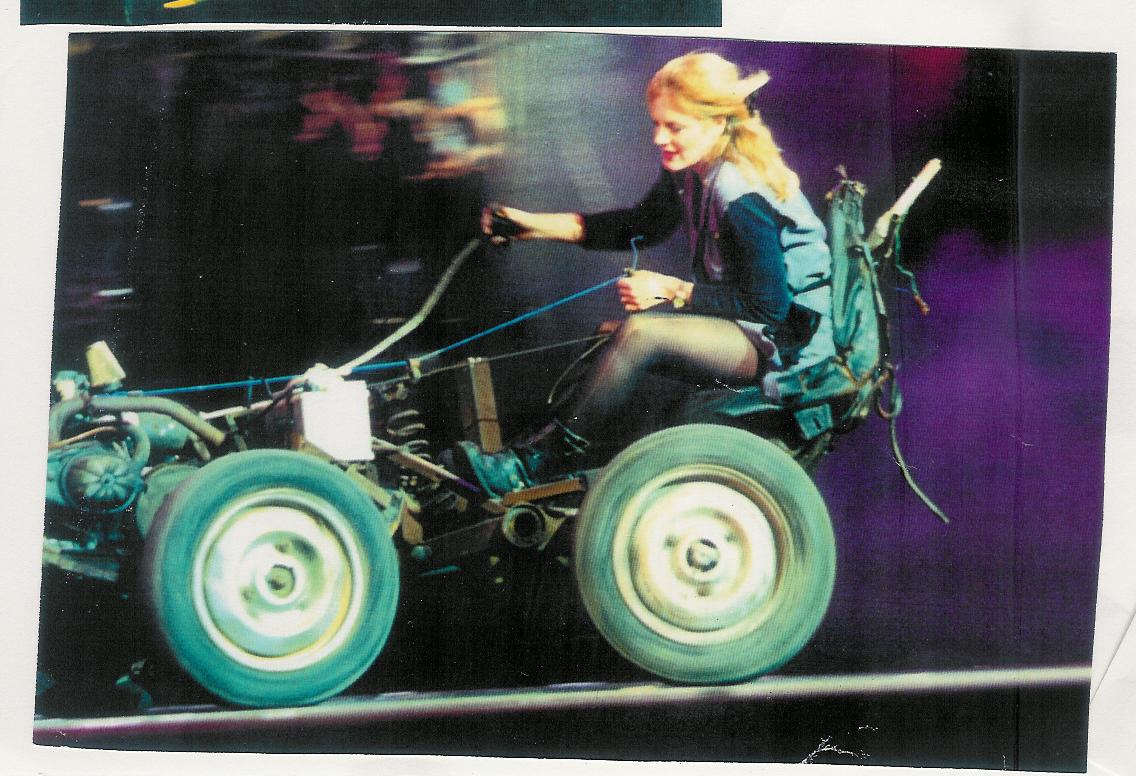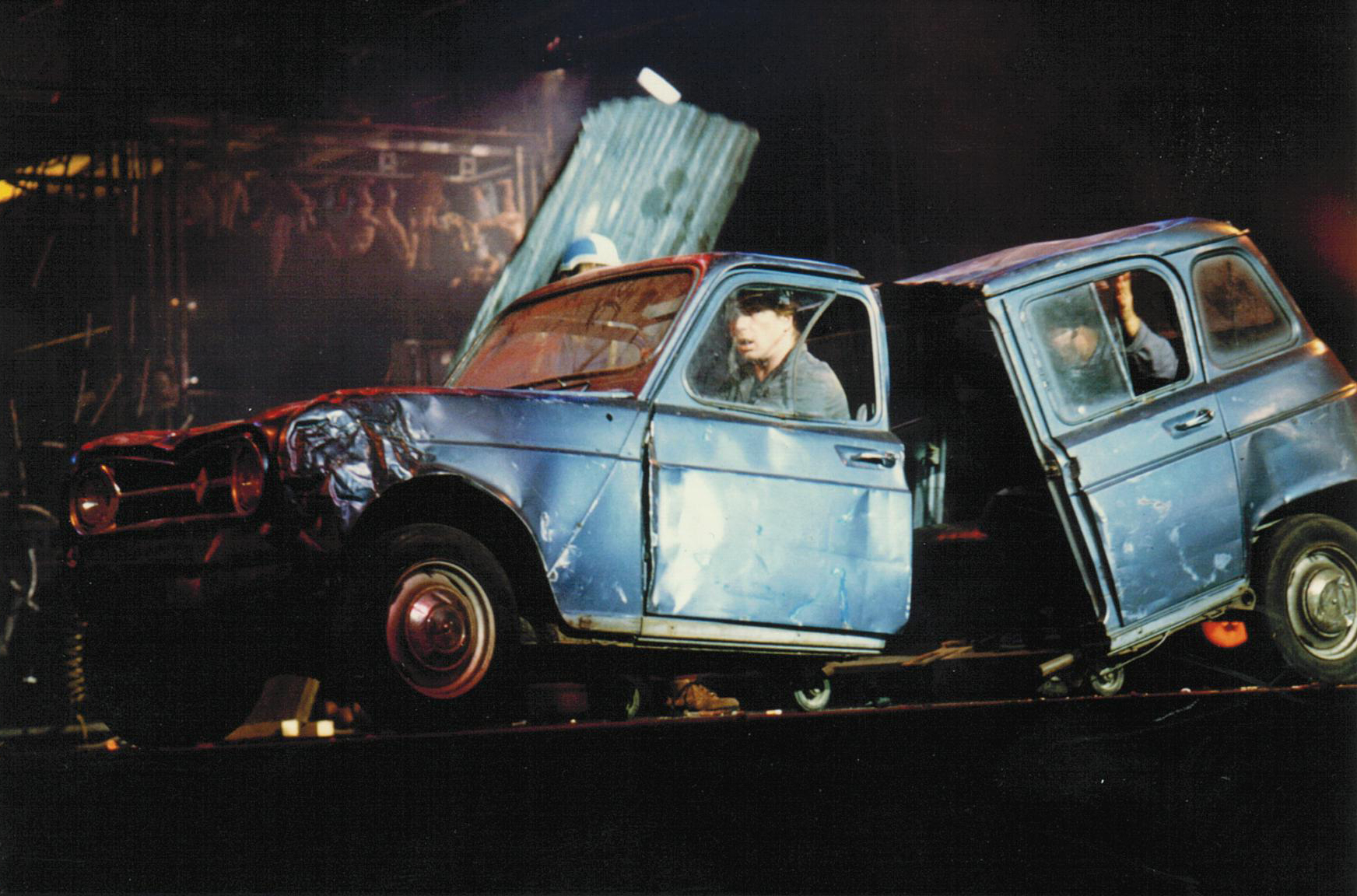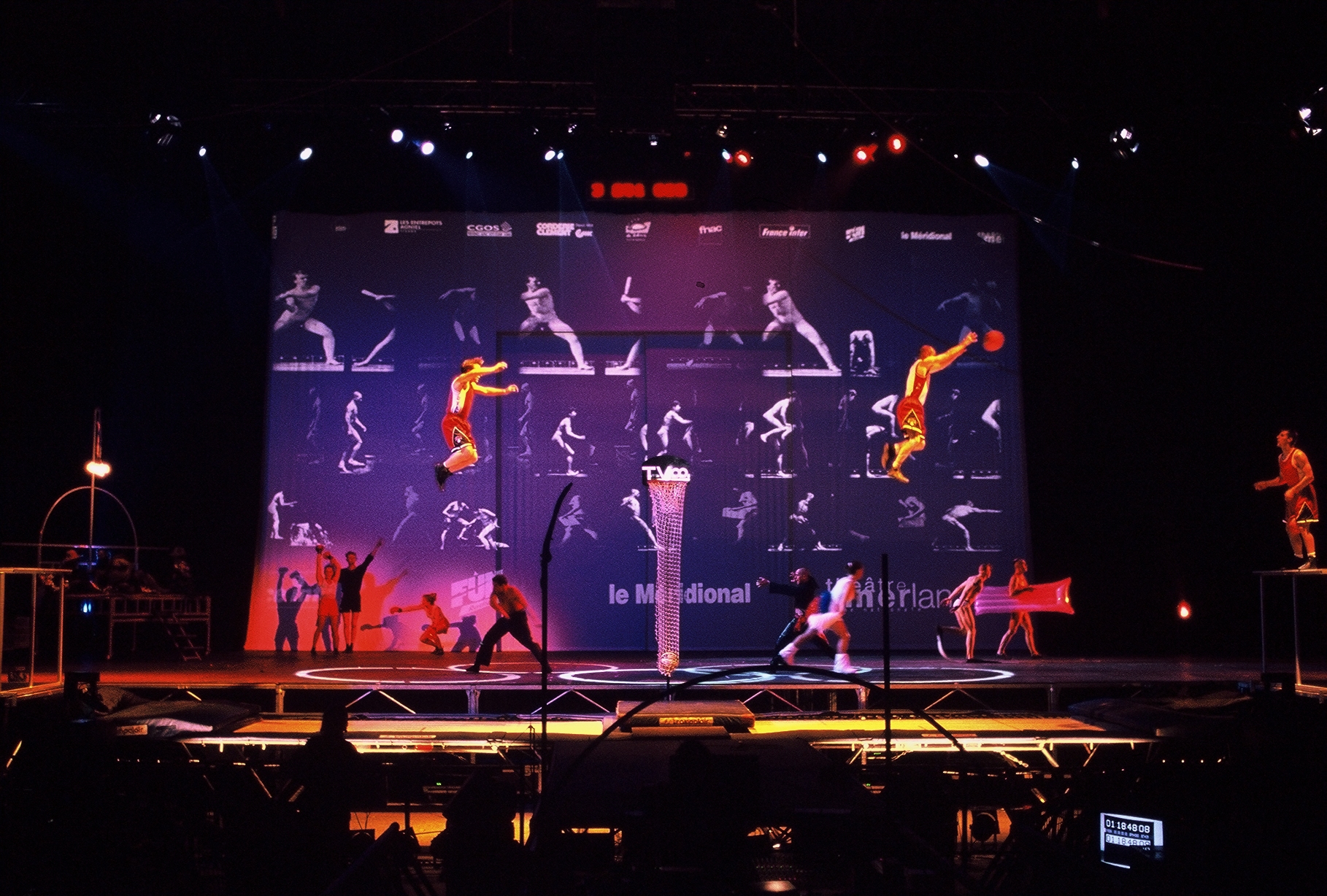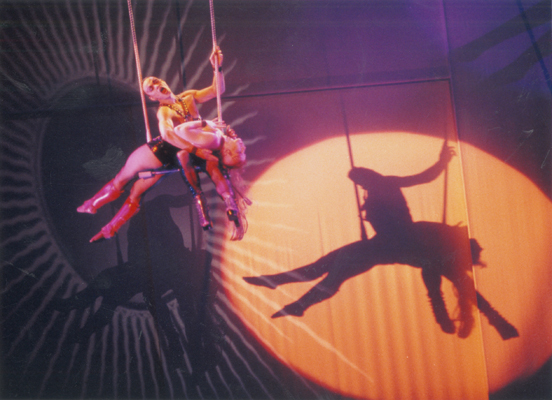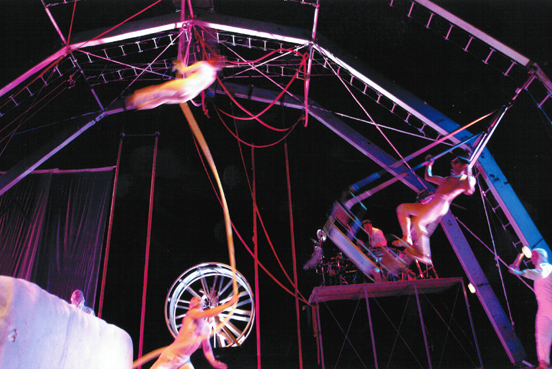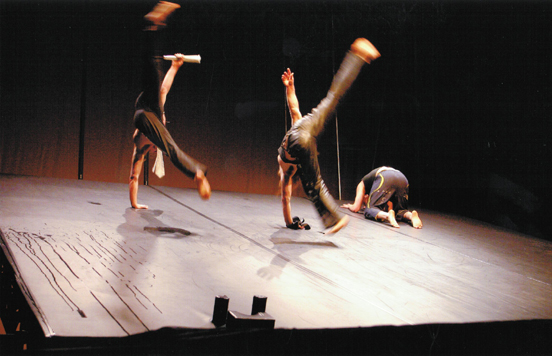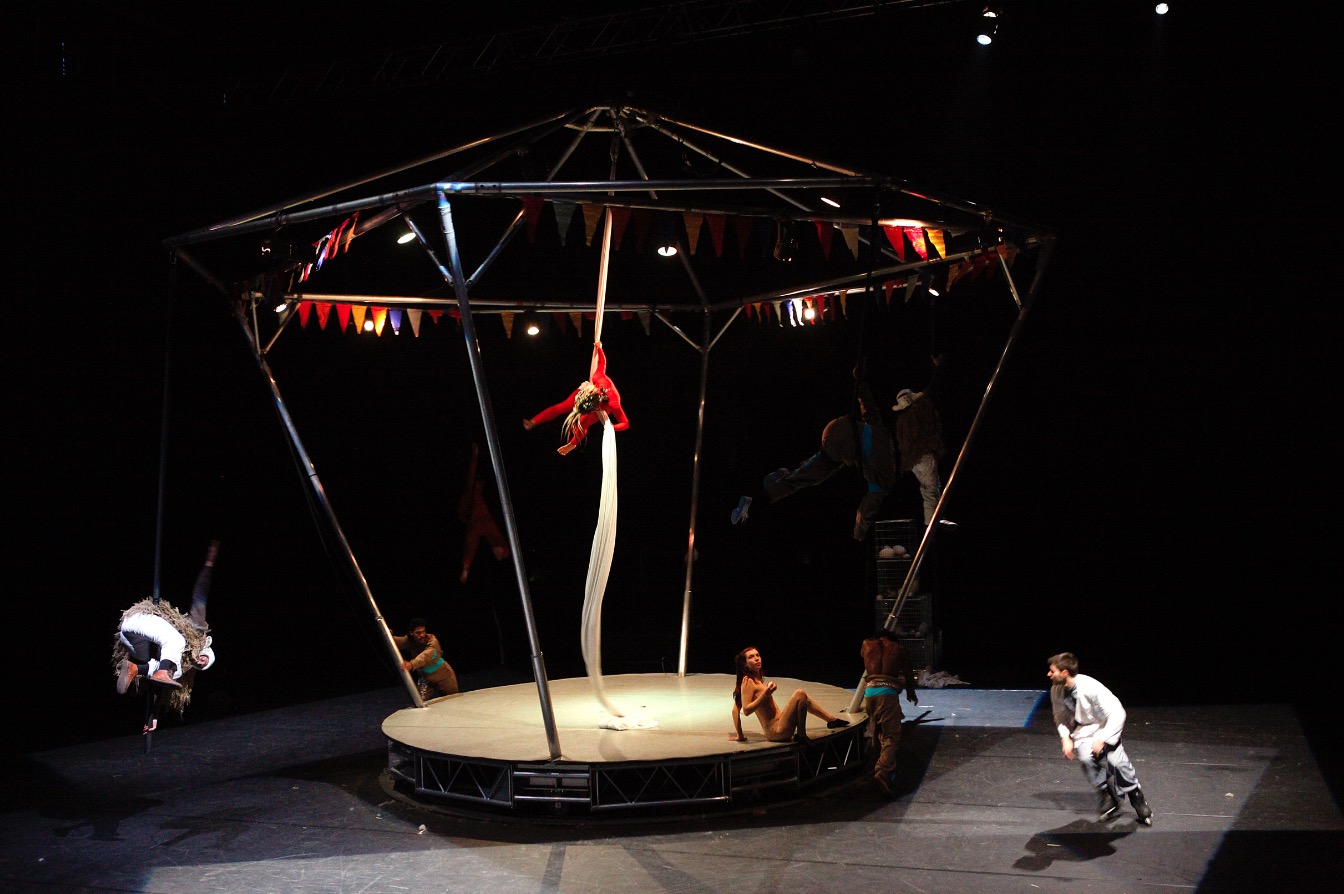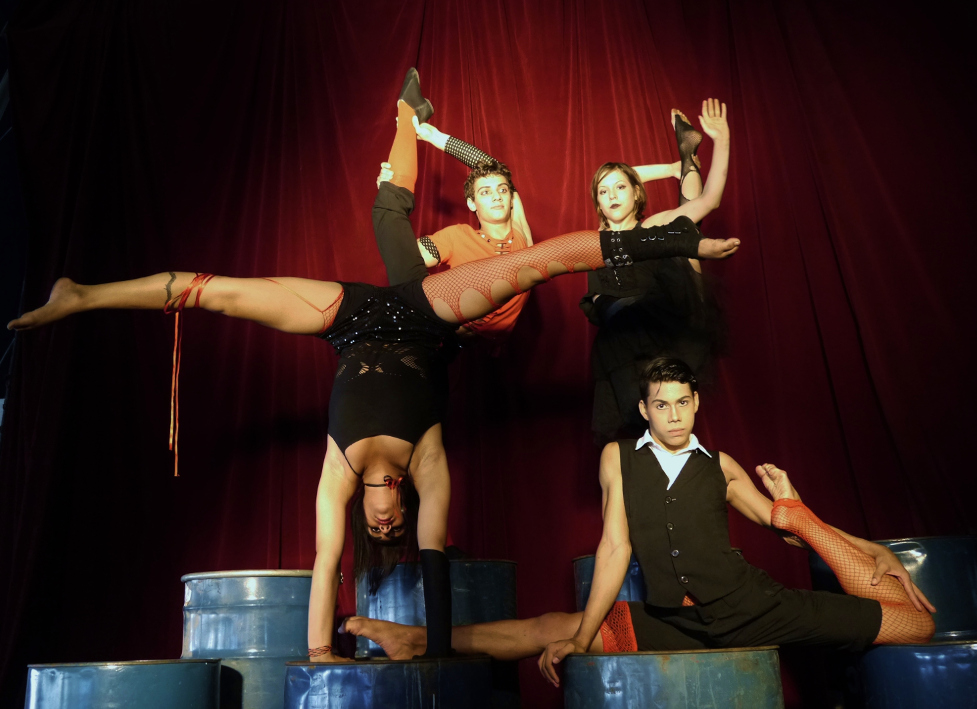The Archaos Company
GET THE BOOK! : Archaos, Cirque de caractère was published by Actes Sud in 2010. Available only in French.
It all began with a group of performers united around a collective circus project.
In 1986, the Archaos association was officially created in France, and then in 1987, Guy Carrara and Pierrot Bidon joined forces to become co-directors of the circus company.
The company’s artistic vision initially consisted of making a radical break from the aesthetic codes of the traditional circus. This approach included creating innovative scenography, adopting contemporary costumes, using modern musical scores, and dealing with important social issues.
For the first time ever, the circus entered the social debate by addressing subjects such as violence in the suburbs, religious oppression, and sexuality. This philosophy stirred up controversy, particularly in Great Britain. But it also proved a huge success with younger audiences aged 15 to 35, and Archaos performances attracted 100 000 spectators during a two-month run under the big top in London in November and December 1990.
Archaos was speaking directly to people of its own generation about the political questions that concerned them, about loneliness and survival in large urban metro areas, and about serious issues, and they always did so with humor, derision, and poetry.
“A dramatic form of social protest, moral provocation, and edification, Archaos does not portray a dreamer or alienated individual but a citizen in revolt who takes life by the scruff of the neck, and does so with all the more rage and fervor because life is so difficult... Parody, kitsch, grunge, carnival, and rock, Archaos’ wide-ranging aesthetic of condemnation is clearly youthful and talks to the people. In this respect, the connection between Archaos and its young (and even teenage) audience is remarkable. Archaos was able to ‘represent’ the only social category that the traditional circus could no longer attract.”
Jean-Michel Guy - "La transfiguration du cirque" – Théâtre Aujourd'hui, 1998
One of the themes addressed by Archaos was the clash of cultures, which is why the company very quickly included artists from every continent, an approach that culminated with the show Métal Clown, which featured 100 artists of 16 different nationalities on stage and dealt with the meeting of two worlds and the question of colonialism.
Archaos first worked in the traditional circus ring, then in a square space, and finally in a rectangular space. As a result, the company built a number of customized circus tents to match the different shows, such as the Chapiteau de Cordes and the Petite Capote. These smaller tents were followed by the Cathédrale, an immense construction with two sections that were 60 meters long, 40 meters wide, and 20 meters high that had hinged metal struts so they could be raised and connected together over a street to create an 80-meter-long, 15-meter-wide performance space. A total of 2500 bleacher seats were installed on either side of the space.
After redesigning the traditional circus tent, Archaos turned to the transformation of the scenography for shows that could be performed in concert halls and theaters.
The avant-garde work of Archaos received its first official critical recognition at the Festival d’Avignon in 1987, and the company would go on to receive performing arts awards all over the world: Italy, Spain, Germany, England, Ireland, Holland, Denmark, Sweden, Finland, Norway, Israel, Canada, Australia... These successes contributed to defining France as a source of innovation in the circus arts.
In 1989, Archaos received a prize for the best live performance of the year in Great Britain. The same year in France, the company was given the Grand Prix National du Cirque by the French Minister of Culture, Jack Lang.
In 1991, Archaos was once again nominated for the best show of the year in the UK for their creation Métal Clown.
Having completed its artistic research into the possibilities of big top and tent shows, from 1993 onwards, Archaos turned its attention to new performance spaces.
From 1994 to 1999, Guy Carrara continued as the company’s sole artistic director.
In 1995, Archaos created Game Over for concert halls and large theaters.
“Guy Carrara explained that the idea for the script came to him when, after ten years without having watched anything on television, he happened to see a CNN news report on the Gulf War... In his view, it was a staging of death for profit, which led him to reflect on the very notion of the spectacle and its evolution in the context of television: ‘I was looking at a world turned upside down by images, where you can hardly tell the real from the fake, and where it’s difficult to distinguish information from entertainment...’ The shows produced by Archaos were created for all the senses... This taste for celebrating instinct and the moment recalls the work of the Futurism movement in Italy and the Eccentrism movement in Russian, which embraced the idea that ‘a show must strike rhythmically upon the nerves...’. So, it’s hardly surprising that Archaos ventured into the world of filmed images. Game Over is, in fact, about the absolute power of televised images and it combines circus arts, techno music, dance, theater, and screens.”
Katérina Flora – "Les écrans sur la scène" – Théâtre XXe Siècle, 1998
“I didn’t like the circus before Archaos. I saw it as a series of performances that were more athletic than artistic... Archaos changed my mind because it’s not a circus. Or rather, the company uses circus disciplines as a language. The physical performance is no less important here than elsewhere, but it’s not seen as an end in itself... Archaos has managed to shed the dusty trappings of the circus of yesteryear and embrace rock and motorcycles without a second thought, because they are open to the modern world. You only have to see Game Over to be convinced.”
Jacques Nerson – critic for Le Masque et la Plume, FRANCE INTER
In 2000, Raquel Rache de Andrade, a performer with the company since 1988, became co-director of Archaos with Guy Carrara.
From 1994 to 2002, Archaos created the shows Game Over 1, Game Over 2, and In Vitro, which were part of the company’s new artistic approach and scenography that were adapted to concert halls and theaters.
In 2001, Archaos moved to Marseille and created a new venue, the CREAC European center for circus arts research, and developed an expanded artistic project that was designed by Guy Carrara, Raquel Rache de Andrade, and Simon Carrara.
From 2003 to 2008, thanks to innovative autonomous stage structures, the shows Margo and Parallèle 26, which was co-created with the Sylvie Guillermin dance company, were presented in both theaters and under big tops.
“The last ten years have seen a significant evolution in the company’s aesthetics. This has been characterized by the gradual disappearance of certain narrative elements. Through this decontextualization, the performances of the circus artists, who also participate in the narrative through their physical expressions, are enhanced by the self-supporting stage structure used in In Vitro 09. Suggestive of a bandstand, this structure evokes the big top, and although in line with previous architectural choices, it opts for a sparseness that reflects a purification of the Archaos aesthetic.”
Martine Maleval - "Archaos, cirque de caractère", Actes Sud-Papiers, Cnac, 2010
Between 2009 and 2013, Archaos developed international artistic collaborations that resulted in the creation of the shows In Vitro 09 (Brazil-France) and Somewhere and Nowhere (Israel-France).
“One text can give rise to several scripts and stagings. As is proven with In Vitro... Written in 1997, it was presented from 1999 to 2001 before being reborn in Brazil in 2009. A veritable rock opera with imagery evocative of Enki Bilal. This work, as beautiful as it is refined, is also a measure of the aesthetic progress made in a quarter of a century... To all this magic, Archaos adds its own artistic and philosophical experience. The experience of chaos?”
Tristan Thérond – Culture Communication, Dec.2010/Jan.2011
In 2012, Archaos was awarded the official Pôle National Cirque label designating it as one of France’s official national circus centers.
In 2015, Raquel Rache de Andrade and Guy Carrara created and co-directed the BIAC - International Biennale of the Circus Arts Marseille Provence Alpes Côte d’Azur, followed by Entre2 BIAC in 2016.
Since 2021, Guy Carrara, Raquel Rache de Andrade, and Simon Carrara have served as co-directors of Archaos, the BIAC, and the Entre2 BIAC.
Main shows created by the ARCHAOS company
• Le Chapiteau de cordes (1987)
• The Last Show on Earth (1989)
• Bouinax (1990)
• BX 91 and Archaos 1 + Archaos 2 (1991)
• Métal Clown (1991)
• DJ 92 (1992)
• DJ 93 (1993)
• Game Over 1 (1995)
• Game Over 2 (1997)
• Défilé (1998)
• Juste Pour (1999)
• In Vitro ou la légende des clones (1999)
• Ecrin (2002)
• Margo (2003)
• Anatom (2004)
• Parallèle 26 (2006)
• In Vitro 09 (2009)
• Somewhere and nowhere (2013)
• Cabaré (2014-2015)
• Parallèle 26 – revival of repertoire with two tours (2021)

